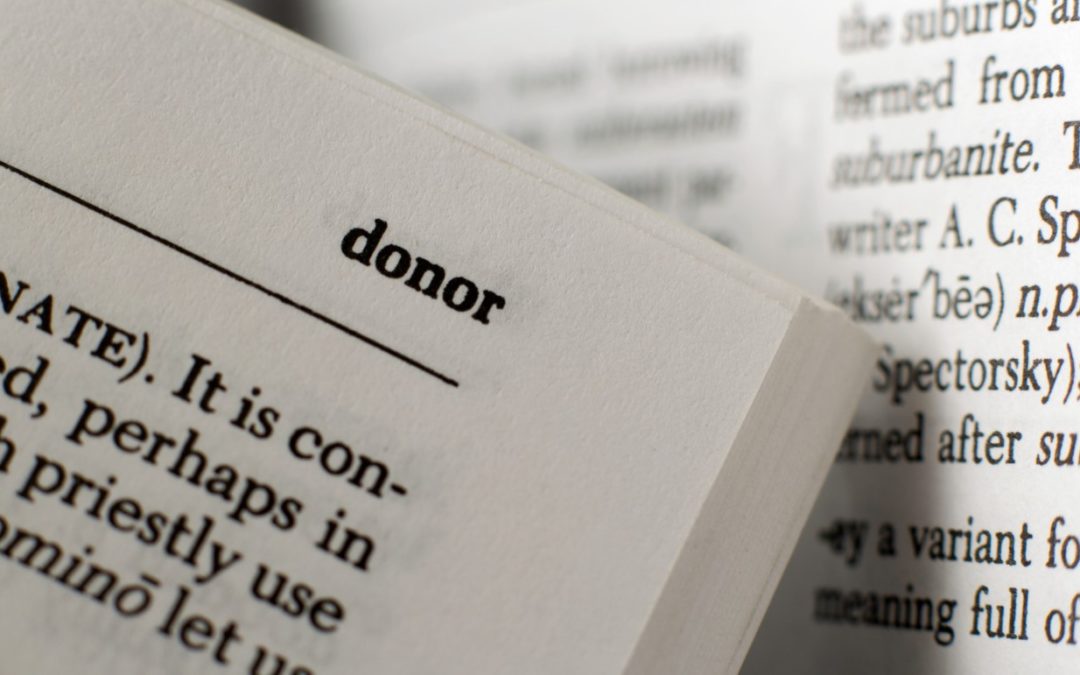charitableThe flexibility and tax advantages of a donor advised fund make them a great option for those interested in building a charitable legacy.
I’ve previously written about the potential benefits of donating appreciated securities instead of cash (you can claim a charitable tax deduction while also avoiding owing capital gains tax on the securities you donate), but there’s more than one way to donate securities. While most charities have brokerage accounts into which they can receive gifts of appreciated securities, another option is a donor advised fund (DAF).
What is a Donor Advised Fund (DAF)?
A donor-advised fund is a type of account specifically created for charitable giving. With a donor-advised fund, instead of donating cash or securities directly to a charity, you contribute to the DAF, which then invests the assets, with the goal of growing the assets and donating them to charity.
How does a Donor Advised Fund work?
First, you open a DAF and contribute assets. From a tax perspective, DAFs are 501(c)(3) public charities, which means that as soon as you make the contribution, you can claim a tax deduction. You can then recommend how you would like the assets invested, but since the assets technically belong to the DAF (which is a charitable organization) assets grow tax-free.
Once you find a charity you would like to support, you can recommend that the DAF issue that charity a grant. The DAF will typically check to ensure that the recommended charity is a 501(c)(3) and then issue a grant check directly to the charitable organization.
You may have noticed that I keep using the term “recommend” to refer to any of the donor’s activities once they’ve contributed assets. That’s because, as the name implies, once the donor has contributed assets, those assets belong to a public charity, not the donor. Though the donor only has advisory privileges, as long as the advised donations fall within the qualifications of the DAF, there should be no reason why the DAF would deny the recommendation of the donor.
What Happens to a Donor Advised Fund at Death?
One of the unique benefits of a DAF is that is provides the opportunity for charitable giving during your lifetime, as well as after your death. From a legacy perspective, DAFs provide more flexibility than many other types of accounts. Each DAF is different, but typically you can continue giving either through bestowing the DAF to others or endowing the DAF to charity.
Either way, though, you’ll want to ensure a succession plan for your DAF before your death, because otherwise the DAF sponsor may drag their feet in gifting out the remaining assets (after all, they get paid on assets remaining in the DAF, not on assets that are gifted out of the DAF).
Bestowing a DAF to Others
Your legacy is about more than leaving behind assets, it’s also about teaching and imparting your values to future generations. If charitable giving is a priority for you, one option that may help is bestowing a DAF to loved ones. You can do this in one of two ways – either by naming successor advisors on the current account or by breaking the existing DAF into two or more new DAFs and naming successor advisors to these accounts.
Be aware, the risk here is that your successor advisors may end up directing charitable funds to charities you never would have supported, so it is important to have open communication if you want to pass along your charitable vision. Needless to say, it is also important to select successor advisors you trust.
Endowing a DAF to Charity
The other option for your DAF after your death is to endow it to a charity. You can do this by endowing the entire account to a single charity, endowing the account to multiple charities, or by granting an annual percentage of the DAF. This may be the better option if you want to ensure the remaining assets end up going to the charity or charities of your choosing.
The Benefits of a Donor Advised Fund
We’ve already touched on a few noteworthy benefits of a DAF, including the ability to claim a charitable deduction once you make a contribution, the ability for the funds in a DAF to grow tax-free, and the ability to continue giving beyond your lifetime, but another nice thing about DAFs is the flexibility they provide in regard to the timing of your donation.
The tax deduction occurs at the point when you (the donor) contribute to the DAF, but then the money can stay in the DAF until you’re ready to make charitable gifts, for instance, after you’ve completed doing research on the charities to which you want to give.
If you haven’t decided on the charities you want to fund, Charity Navigator may be a good place to start. Additionally, the IRS has an online search tool called Tax Exempt Organization Search that makes it easy to see if an organization to which you’re considering contributing qualifies for tax-deductible donations.
This extra flexibility has a variety of benefits. For example, if the end of the year is approaching and you want to make a charitable contribution in time to receive a deduction but have not decided on a charity to donate to, contributing assets to a DAF can give you time to make a well-researched and informed donation.
Donor Advised Funds and Charitable Bunching
The flexibility of a DAF also facilitates a unique planning opportunity called charitable bunching, which is when you make several years’ worth of charitable gifts in one year, to get the full itemized deductions, and then just take the standard deduction in the other years.
The 2017 tax reform bill, called the Tax Cuts and Jobs Act, significantly increased the standard deduction. While great for the majority of filers who don’t itemize, this has effectively diluted the potency of charitable deductions for those folks who regularly make charitable gifts. However, charitable bunching is one way to restore the power of charitable deductions.
Donor Advised Fund vs Private Foundation
We’ve seen how DAFs provide more flexibility and tax advantages than simply donating cash, but how do DAFs compare to another popular charitable giving vehicle – private foundations?
A private foundation is a charitable organization you create with the purpose of charitable giving. Creating a private foundation typically requires a large initial contribution, as well as sizeable start-up fees. Private foundations also come with administrative responsibilities, which include recordkeeping, filing taxes, managing assets, maintaining board minutes, etc. In contrast, with a DAF, you just gift the appreciated securities to the DAF, sell the securities within the DAF, then give cash to the charities of your choice.
Additionally, a private foundation must pay an excise tax on investment income and there are required annual grant distribution percentages (there are neither excise taxes nor grant distribution requirements for a DAF).
Ultimately, there are pros and cons to each option. A private foundation provides a greater level of flexibility, in general, while compared to private foundations, DAFs are more accessible, have lower administrative expenses, and have higher tax deduction limits as a percentage of AGI.
The Takeaway
No account option is perfect, but for those of us for whom charitable giving is a priority, DAFs provide a flexible, tax-efficient way to donate to the charities of our choosing. To discuss charitable giving strategies in more depth, feel free to schedule a free consultation with us using the button in the navigation menu.

